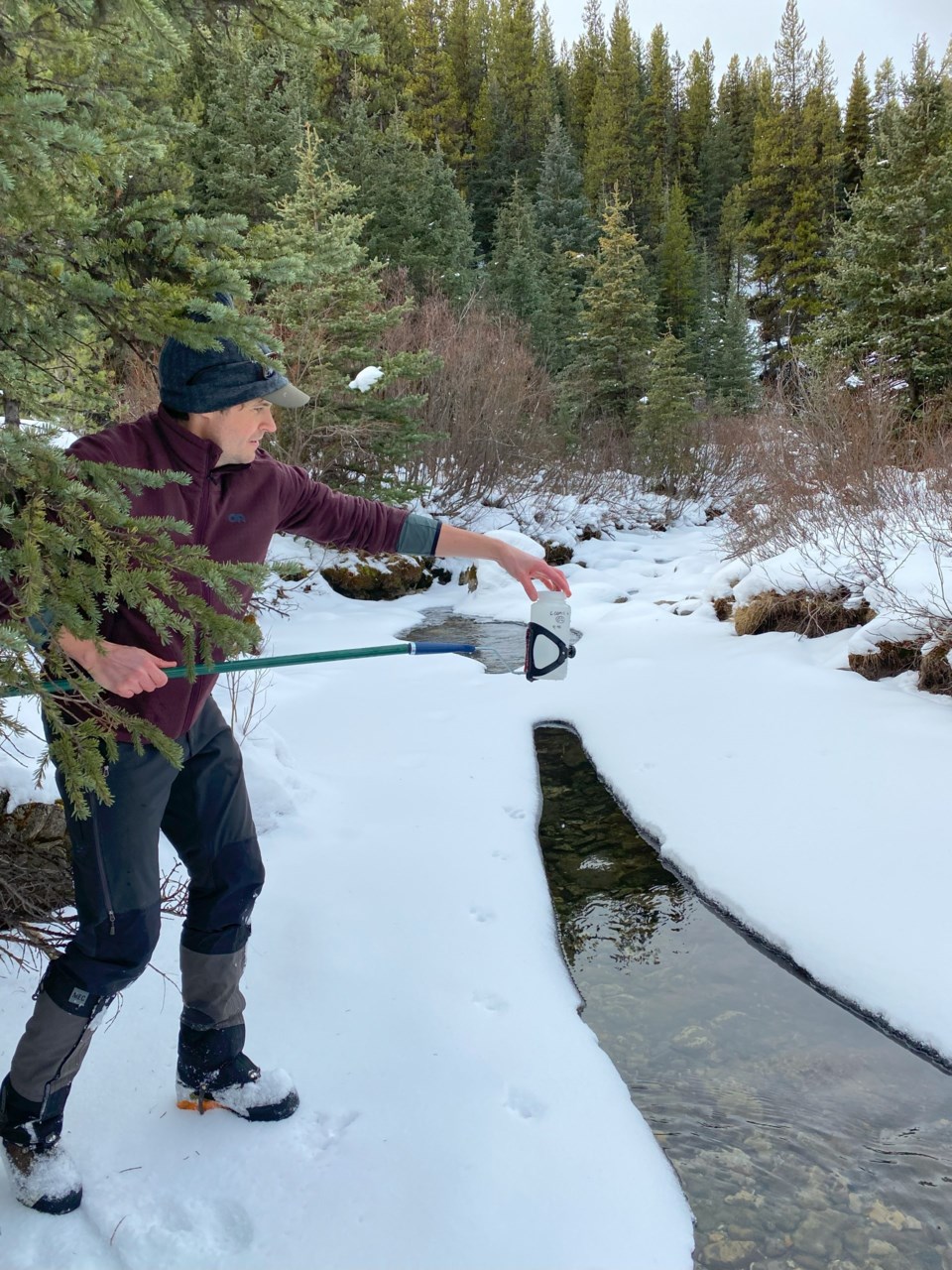Opponents of clearcut logging in Kananaskis Country got another boost this week, in the form of a new scientific field study commissioned by an environmental group proving the at-risk Bull trout is present in the Loomis Creek area where Spray Lake Sawmills is planning to harvest this winter.
SLS is now owned by West Fraser Timber Co. Inc. Their forest management plan for the Highwood River area (which includes Loomis Creek) states they are going to clearcut in the area in the winters of 2023-24 and 2024-25. To date, no logging has begun, as the new owners of the sawmill in Cochrane say they want to meet with stakeholders and review their plans.
Protesters and other opponents were encouraged to see the results of the eDNA study, as it confirms the presence of Bull trout upstream from the confluence of the Loomis Creek and Highwood River.
CPAWS Southern Alberta commissioned Matt Coombs at Fintegrate Fisheries & Watershed Consulting Ltd., to do the study. Funding was provided by Bow River Trout Foundation (BRTF). CPAWS retains the rights to the report and its findings.
CPAWS released the study to SLS, (West Fraser) the federal Department of Fisheries and Oceans (DFO), and Alberta Forestry and Parks Friday afternoon.
Josh Killeen, Conservation Science & Programs Manager at CPAWS, said although it was known anecdotally there were Bull trout in the area, the study scientifically confirms they are present and spawning in a much larger area than previously assumed, right in the middle of the proposed clearcut around Loomis Creek, adjacent to the Highwood River.
“There’s a lot of concern from a lot of different folks about the logging plans and the impact on those lands if they go ahead, and one issue is the Bull trout.”
“And we know the Highwood River is really important for Bull trout – it’s well documented it’s an important area for spawning.
“But what we didn’t know was the importance of Loomis Creek. It flows into the Highwood, and is one of the places that would be most impacted, because logging is planned along both sides of the creek, so we wanted to find out whether the Bull trout were using Loomis Creek,” he said.
eDNA stands for Environmental DNA, a less intrusive (and costly) method of determining if a certain species is present, compared to actually catching or shocking the fish. The likelihood of detecting an organism like a fish in the environment by collecting a fragment of its DNA is higher than catching or seeing the fish itself.
The area in question has been designated as “critical habitat” for Bull trout by the DFO, which is still investigating SLS for building a bridge over the Highwood River prior to receiving any authorization.
“’Critical habitat’ doesn’t necessarily mean that the species is present, so we wanted to find out they were actually present,” Killeen said.
The result means they now know the Bull trout is much more widely dispersed throughout the area than previously known.
Although they still don’t have any specific data on population numbers (that would require more detailed study), Killeen said they now are better informed about trout activity in the clearcut area.
“There are likely Bull trout using this area throughout the year, through all their life stages, they’re resident. And they’re doing that throughout a significant portion of the length of the creek, as far as 3.2 kilometres from the Highwood, and we think further upstream as well.”
Killeen said non-profits shouldn’t have to be funding these types of studies.
“We really appreciate the Bow River Trout Foundation funding it, but ultimately it should be part of the planning that goes into where logging should and shouldn’t occur, either by the company or the government.”
Currently, logging companies submit their plans to the province for approval. Critics have been calling for a review of current legislation covering forestry activities in Alberta for a few years.
CPAWS has requested interviews with Alberta Forestry and Parks minister Todd Loewen.
“He said no. He said he was busy,” Killeen said. The Eagle got the same response.
“There needs to be a much more fulsome assessment of this area and its importance,” he said.
SLS has agreed to meet with CPAWS in early February.
An email from The Eagle to the DFO asking for an update to their investigation into SLS’s activities surrounding the construction of the bridge was not immediately answered Jan. 26. That investigation dates back to at least last September, when the DFO confirmed it was underway, but would not explain why they had launched it, or provide any other details.
Protesters met at the bridge site in November. Letter campaigns were launched by environmental groups last fall, and the mayors of Okotoks and High River also wrote letters to the province asking for a pause to logging plans in light of the negative effects of clearcutting in the watershed, and an anticipated drought this spring.
West Fraser was not immediately available for comment Friday. Their response will be added when it is received.
To view the study go to https://cpaws-southernalberta.org/wp-content/uploads/2024/01/CPAWS_Loomis_Creek_Bull_Trout_eDNA_survey_final_report.pdf




